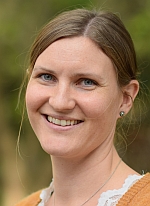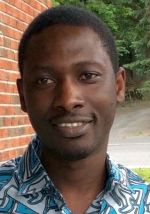Previous events - Page 238
Anita Verpe Dyrrdal at the Department of Geosciences will be defending her dissertation: Estimating extreme precipitation applied in the forecasting of floods in watersheds and small catchments in Norway
Doctoral candidate Anita Verpe Dyrrdal at the Department of Geosciences will give a trial lecture on the given topic: Methods and prospects for seasonal precipitation forecasting
Trial lecture on the subject of exoplanets.
Nana Yaw Agyei-Dwarko at the Department of Geosciences will be defending his dissertation: U-Pb geochronology and evolution of Caledonian Nappes in northern Norway: Terrane identifications, correlations and provenance of metasedimentary cover sequences and nappes in the Scandinavian Caledonides
Welcome to the GeoHyd Lunch Seminar on Friday 27 November @12:15 in AUD 2 in the Geology building.
Trial lecture on the subject of exoplanets.
This Friday 27th of November, we will read a paper by Cantalapiedra et al. 2015: "Congruent phylogenetic and fossil signatures of mammalian diversification dynamics driven by Tertiary abiotic change."
Doctoral candidate Nana Yaw Agyei-Dwarko at the Department of Geosciences will give a trial lecture on the given topic: The classical/traditional tectonic concepts (maps) and models of the Scandinavian Caledonides: their foundation and the on-going revolution
”Seasonal dynamics and diversity of microalgae and flagellate protists of two sandy shores in Oslofjorden”
Upcoming short presentation from MSc/PhD students in meteorology and oceanography:
Speaker: Haralampos Sarchosidis
Title: El Niño in the past, future and present
This week we will discuss a paper by Lamichhaney and colleagues recently published in Nature Genetics. The study addresses the genomic architecture explaining the striking morphological and behavioural polymorphism seen among three distinctive male morphs of the lekking wader Ruff.
Trial lecture on the subject of exoplanets.
Piotr Soltan (University of Warsaw) will give a talk with title: Subgroups of quantum groups, the center and inner automorphisms
Piero Ullio, SISSA (Trieste)
The dark matter puzzle is one of deepest and longest-standing problems in Science. While there is overwhelming evidence that dark matter is the building block of all structures in the Universe, its nature remains unknown.
There are several theoretical frameworks predicting that dark matter halos - including the halo of our own galaxy - are made of particles which can annihilate in pairs or decay into ordinary Standard Model states, giving rise to exotic astrophysical signals.
The focus in recent years has been in particular on the search for exotic components with gamma- and cosmic-ray observatories, with a dramatic improvement in quality and coverage of the available data.
Unfortunately, for none of the originally proposed targets a dark matter signal stands clearly above backgrounds from standard astrophysical sources: it is then apparent that to keep exploiting these channels as efficient tools to either discover dark matter or set constraints on dark matter candidates, a closer addressing of signals and backgrounds are needed.
We illustrate this point for two targets, the Galactic center and dwarfs satellites which most recently have been highlighted, respectively, as most promising for a tentative detection and most constraining on particle dark matter models.
Tobias Erhardt (Technische Universität, München) will give a seminar in the lunch area, 8th floor N.H. Abel's House at 14:15 November 24th.
Arnaud Brothier, Vanderbilt University (USA) will give a talk with title: Analytic properties for subfactors
Abstract:
I will discuss analytic properties for groups and their generalizations to subfactors, standard invariants, and certain tensor categories.
I will present a class of subfactor planar algebras that are constructed with a group acting on a bipartite graph.
I will show that if the group satisfies a given approximation property (such as amenability, Haagerup property, or weak amenability), then the subfactor planar algebra satisfies it as well.
I will exhibit an infinite family of subfactor planar algebras with non-integer index that are non-amenable, have the Haagerup property, and have the complete metric approximation property.
Welcome to the GeoHyd Lunch Seminar on Friday 20 November @12:15 in AUD 1 in the Geology building.
DNA damage induced changes to Golgi apparatus morphology: Visual analysis of Golgi apparatus morphological change and analysis of effect on proteoglycan synthesis and sorting in MDCK cells.
Paul Krühner (TU Wien) gives a lecture with the title: Time change equations for Lévy type processes
Upcoming short presentation in meteorology and oceanography:
Speaker: Kicki Krüger
Title: Halocarbons and Meteorology above the Peruvian upwelling - The ASTRA OMZ cruise during October 2015
This week we will discuss a paper on how structural variation such as copy number variation can tell a different story than SNPs. This study by Sudmant and coworkers was recently published in Science. Please note that we have changed the time to 11:30 this time too!
”Relationships between behavioural traits in wild great tits Parus major”
Björn Herrmann, LAPTh (Annecy)
A powerful tool to constrain a new physics model is to predict the relic density of dark matter and compare it to the recent limits published by Planck in order to identify (dis)favoured regions of parameter space. After reviewing the standard calculation of the dark matter relic density in the freeze-out picture, I will discuss several uncertainties entering this calculation. Focusing then on the particle physics aspects, I will consider the case of the Minimal Supersymmetric Standard Model and present the project DM@NLO, which aims at improving the preciction of the neutralino relic density by including radiative corrections to the (co)annihilation cross-section of the dark matter candidate. In particular, I will show that the impact of these corrections can be numerically larger than the current experimental uncertainty on cosmological data.
(The slides are now available).
CEES Extra seminar by Laura Nuño de la Rosa
Late Lunch Talk by Ole Kristian Tørresen, Lex Nederbragt, with others from the cod genomics team

